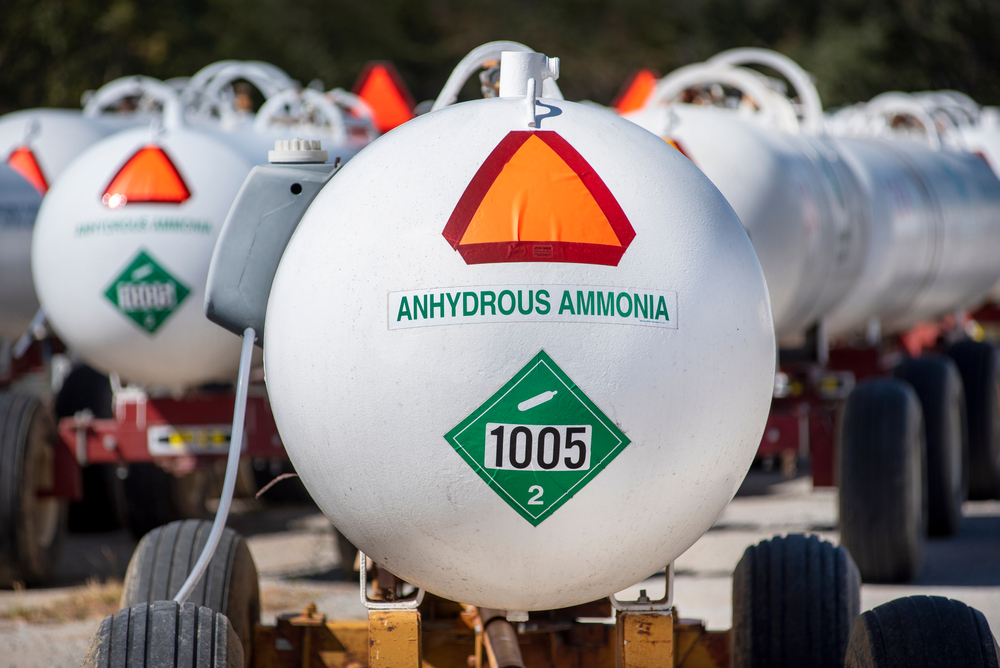Anhydrous ammonia is commonly used in various industrial, agricultural, and commercial applications. It is essential to understand its properties and potential risks, especially whether it is flammable or not.

Credit: www.fireengineering.com
Properties of Anhydrous Ammonia
| Property | Description |
|---|---|
| Chemical formula | NH3 |
| Color | Clear, colorless gas |
| Odor | Pungent and suffocating |
| Boiling point | -28°F (-33°C) |
| Freezing point | -108°F (-77°C) |
| Density | 0.6819 g/cm3 |
| pH | 11.6 (alkaline) |
Is Anhydrous Ammonia Flammable?
No, anhydrous ammonia is not flammable, but it is highly reactive and poses significant risks in certain conditions. Flammability is determined by the minimum concentration needed to ignite the substance, known as the Lower Flammable Limit (LFL). Anhydrous ammonia has an LFL of 15%, which means it needs to be present in the air at a concentration of 15% or higher to ignite.
Understanding Ammonia’s Reactivity
Although anhydrous ammonia is not flammable, it can still contribute to fires or explosions due to its reactivity. It reacts with certain substances, especially strong oxidizers, and can form explosive mixtures. Common oxidizers include chlorine, iodine, bromine, and sodium hypochlorite.
If a leak or spill of anhydrous ammonia occurs and comes into contact with an ignition source or a large quantity of oxidizing material, it can lead to a fire or explosion. Therefore, it is vital to handle anhydrous ammonia with caution and follow proper safety protocols.
Safety Precautions for Handling Anhydrous Ammonia
When working with anhydrous ammonia, it is crucial to prioritize safety. Following these precautions can help minimize the risks associated with its use:
- Always wear appropriate personal protective equipment (PPE) such as gloves, goggles, and a respiratory mask when handling anhydrous ammonia.
- Store anhydrous ammonia in a well-ventilated area, away from sources of heat or ignition.
- Regularly inspect and maintain storage tanks and equipment to prevent leaks and spills.
- Use proper transfer and handling methods to minimize exposure and prevent accidents.
- Train employees and personnel on proper handling procedures and emergency response protocols.
- In case of a leak or spill, evacuate the area, and promptly notify emergency services.

Credit: ehsdailyadvisor.blr.com
Beyond Flammability: Health Hazards
While anhydrous ammonia may not be flammable, it poses significant health hazards. Exposure to high concentrations of anhydrous ammonia can cause severe irritation and burns to the eyes, skin, and respiratory system.
Common symptoms of exposure include coughing, difficulty breathing, chest pain, and chemical burns. In extreme cases, it can lead to respiratory distress, pulmonary edema, and even death.
Frequently Asked Questions On Is Anhydrous Ammonia Flammable? Unveiling The Potential Risks
Is Anhydrous Ammonia Flammable?
Anhydrous ammonia is highly flammable and can ignite easily under certain conditions, making it a potential fire hazard.
How Does Anhydrous Ammonia Catch Fire?
Anhydrous ammonia can catch fire when it comes into contact with an ignition source, such as an open flame, spark, or hot surface.
What Are The Dangers Of Anhydrous Ammonia Fires?
Anhydrous ammonia fires can release toxic gases into the air, cause severe burns to the skin and eyes, and pose a threat to nearby buildings and people.
What Precautions Should Be Taken To Prevent Anhydrous Ammonia Fires?
To prevent anhydrous ammonia fires, it’s crucial to store and handle the chemical properly, use appropriate safety equipment, and implement proper ventilation systems to minimize the risk of exposure and ignition.
Conclusion
Anhydrous ammonia is not flammable but is highly reactive and can contribute to fires or explosions in the presence of certain substances. It is crucial to handle anhydrous ammonia with caution, following proper safety protocols and wearing adequate personal protective equipment.
Understanding its properties and the risks associated with its use is vital for anyone working with anhydrous ammonia to ensure a safe working environment and prevent accidents or incidents.
